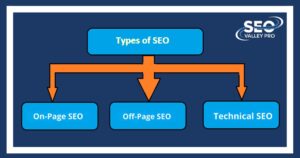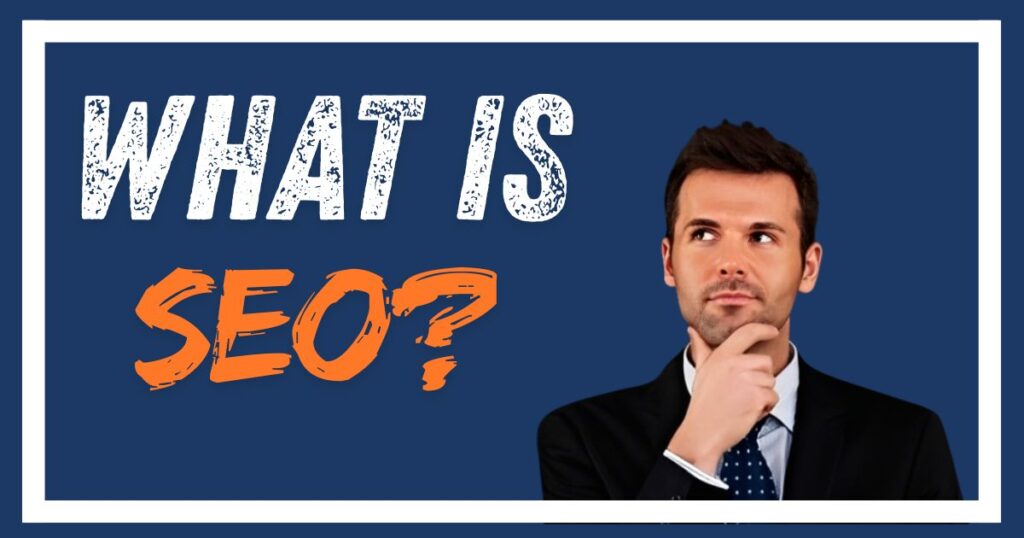SEO stands for Search Engine Optimization. It’s the process of improving your website so that it ranks higher on search engines like Google, Bing, and Yahoo.
In simple words, SEO helps your website show up when people search for something related to your business. The better your SEO, the more visitors you get — which means more customers, more sales, or more followers.
SEO is a crucial part of digital marketing because it drives organic (free) traffic to your site without paying for ads.
Why is SEO Important?
SEO helps your website:
- Get found by more people – Higher rankings mean more clicks.
- Build trust & authority – Google rewards helpful, expert content.
- Beat competitors – Outrank others in your niche.
- Drive free, long-term traffic – Paid ads, SEO keeps working over time and boost your revenue.
How Does SEO Work?
SEO works by helping search engines understand your website. Search engines use bots to crawl your website, index the pages, and rank them based on hundreds of factors like quality, relevance, speed, and trust.
Crawling and Indexing
- Crawling: Search engines scan your website pages using bots.
- Indexing: They save and organize your pages in their database.
- If your site isn’t indexed, it won’t appear on Google.
Ranking Factors
SEO ranking depends on:
- Relevant keywords.
- Mobile-friendliness.
- Website speed.
- High-quality content.
- Backlinks (links from other trusted websites).
- User experience (UX).
- E-E-A-T: Google loves websites that show Experience, Expertise, Authoritativeness, and Trustworthiness.
Search Intent Matching
Google tries to show the most helpful result based on what users search for:
- Informational: “What is SEO?”
- Transactional: “Buy SEO services.”
- Navigational: “SEO Valley Pro website.”
3 Core Types of SEO (With 2025 Updates)

1- On-Page SEO
2- Technical SEO
3- Off-Page SEO
1. On-Page SEO – Optimizing Your Content
This involves improving individual pages to rank higher.
Keyword Optimization
- Use long-tail keywords (e.g., “best running shoes for flat feet”).
- Include keywords in:
- Title tags
- Headings (H1, H2, H3)
- First 100 words
- Image alt text
High-Quality Content
- Write detailed, helpful content (1,500+ words performs best).
- Use multimedia (images, videos, infographics).
- Update old posts to keep them relevant.
User Experience (UX) Signals
- Fast loading speed (under 2 seconds).
- Mobile-friendly design (Google prioritizes mobile-first indexing).
- Readable formatting (short paragraphs, bullet points).
2. Technical SEO – Fixing Website Structure
If Google can’t crawl or understand your site, ranking is impossible.
Site Speed Optimization
- Compress images (use WebP format).
- Enable browser caching.
- Use a fast hosting provider (avoid shared hosting).
Mobile Responsiveness
- Test with Google’s Mobile-Friendly Tool.
- Avoid intrusive pop-ups.
Structured Data (Schema Markup)
- Helps Google display rich snippets (ratings, FAQs, recipes).
Secure Website (HTTPS)
- A must-have for ranking and user trust.
3. Off-Page SEO – Building Authority
This happens outside your website but impacts rankings.
Backlinks (Inbound Links)
- Quality > Quantity – 1 link from Forbes is better than 100 spammy links.
- Get links via:
- Guest blogging
- Broken link building
- Digital PR
Brand Mentions & Citations
- Get listed on authoritative directories (Yelp, BBB).
- Encourage social shares (Twitter, LinkedIn, Pinterest).
Local SEO (For Businesses)
- Optimize Google My Business.
- Get local backlinks (news sites, blogs).
Google’s EEAT & SEO in 2025
Google now prioritizes EEAT:
- Experience – First-hand knowledge matters.
- Expertise – Show credentials (author bio, certifications).
- Authoritativeness – Strong backlinks and industry reputation.
- Trustworthiness – Secure, accurate, transparent content.
2025 SEO Trends to Watch
AI & Voice Search Optimization
- Optimize for natural language queries (“Hey Google, best pizza near me”).
- Use FAQ schema for voice answers.
Video & Visual Search
- YouTube SEO is growing – optimize video titles, descriptions, and tags.
- Use high-quality images with alt text.
Zero-Click Searches (Featured Snippets)
- Answer questions in a concise, structured format.
- Use bullet points, tables, and step-by-step guides.
Core Web Vitals (UX Ranking Factor)
- Improve loading speed (LCP), interactivity (FID), and visual stability (CLS).
How to Start SEO in 2025 (Step-by-Step Plan)
Step 1: Keyword Research
- Use Google Keyword Planner, Ahrefs, or Ubersuggest.
- Target low-competition, high-traffic keywords.
Step 2: Optimize Existing Content
- Update old posts with new data, images, and internal links.
- Fix broken links (use Screaming Frog).
Step 3: Improve Technical SEO
- Submit a sitemap to Google Search Console.
- Fix 404 errors, redirects, and duplicate content.
Step 4: Build High-Quality Backlinks
- Write guest posts on industry blogs.
- Create link-worthy content (studies, infographics).
Step 5: Track & Improve
- Use Google Analytics & Search Console.
- Monitor rankings with SEMrush or Moz.
Common SEO Mistakes to Avoid
- Keyword stuffing – Write naturally.
- Ignoring mobile users – Over 80% of searches are mobile.
- Slow website speed – Users leave if a page takes >3 sec to load.
- Duplicate content – Hurts rankings (use canonical tags).
- Neglecting local SEO – If you have a business, claim your GMB profile.
SEO FAQs
What is SEO in simple words?
SEO means improving your website to rank higher on Google and get free traffic.
How long does SEO take?
Usually, 3-6 months to see good results, but it varies based on competition and effort.
Is SEO free?
SEO traffic is free, but doing SEO (tools, time, experts) may cost money.
Can I do SEO myself?
Yes! Many business owners start SEO on their own using free tools.
Does SEO still work in 2025?
Yes, and it’s more important than ever with AI, voice search, and mobile trends.
Final Thoughts: Is SEO Worth It in 2025?
SEO is a powerful tool to grow your website’s visibility without paying for ads. By optimizing your content, building authority, and improving technical aspects, you can rank higher and attract more visitors.
Start with small steps, track your progress, and keep learning—SEO is always evolving!

